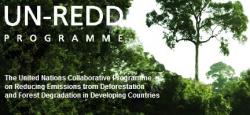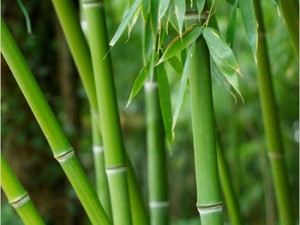Dickinson to Durban » Key COP17 Issues » It’s a Tarp: Alternatives and Addendums to REDD
It’s a Tarp: Alternatives and Addendums to REDD
December 1st, 2011 | 2 Comments
By Sam Pollan, ’14
In my last post I discussed the shift of REDD from a watertight solution to a hole-ridden tarp. Emissions from deforestation related activities are a huge contributor to climate change and it only makes sense that they should be one of the primary issues addressed. This is especially true when the apparent solution is as simple as to stop cutting down trees. Unfortunately, this has more than a few social ramifications. While REDD has the potential for serious climate mitigation, I think it is also important to look at ways to address and correct problems in the current system as well as alternatives that can be done outside of REDD involving carbon sequestration through plants.
Corruption is and land tenure are two troubling areas in this discussion. Yesterday I discussed “carbon cowboys” and the role law enforcment can play in reducing emissions that way. Land tenure is another issue entirely. The dilemma with land tenure is a Lorax-esque scenario where people are arguing over their rights to the trees. My view coming into the conference regarding trees was that if a tree grew on my property, I could do with it what I wish since I own it. This, however, is not a universal standard. In some countries the forests belong to the government and any tree that grows on your property ultimately belongs to the government. If the tree is not cared for correctly, the government has the right to fine the landowner. Because of this, many people take the approach that it is better to cut the tree down before it is noticed in order to avoid a later fine. This method of governance needs to change in order to promote tree growth perhaps by incentivizing it through tax credits or something similar. Governments also need to better understand and act in accordance with indigenous land rights. Many indigenous groups have lived for hundreds of years in forested areas and have done a much better job preserving their land than we have. Governments can learn from indigenous knowledge.
 Although REDD is the primary framwork for addressing plant-related carbon offsetting, my ventures in the COP exposition center have shown me there are several alternatives. I am a strong proponent of agroforestry as a method for combatting climate change, however, I have seen a few very interesting alternatives in the past few days that don’t quite fit under the REDD platform. Dr. Yannick Kuehl of the International Network for Bamboo and Rattan (INBAR) sat down and talked to me about the advantages of bamboo. Bamboo has improved livelihoods worldwide for decades, however, in only the past few years INBAR has taken to using fast-growing plants as a method of carbon sequestration. The bamboo stalks can be converted into durable products and regrow every year from the same root system. The root system makes up about 70-80 percent of the biomass and since it grows without being harvested it has the potential to act as a significant carbon sink. Other booths and organizations have experimented in other methods of carbon sequestration through the use of fast-growing plants such as seaweed and have developed interesting consumer products as well such as paper, biofuel, and even computer screen cleaners. Biocharring and the use of terra preta soils are other areas I am quite interested in as well.
Although REDD is the primary framwork for addressing plant-related carbon offsetting, my ventures in the COP exposition center have shown me there are several alternatives. I am a strong proponent of agroforestry as a method for combatting climate change, however, I have seen a few very interesting alternatives in the past few days that don’t quite fit under the REDD platform. Dr. Yannick Kuehl of the International Network for Bamboo and Rattan (INBAR) sat down and talked to me about the advantages of bamboo. Bamboo has improved livelihoods worldwide for decades, however, in only the past few years INBAR has taken to using fast-growing plants as a method of carbon sequestration. The bamboo stalks can be converted into durable products and regrow every year from the same root system. The root system makes up about 70-80 percent of the biomass and since it grows without being harvested it has the potential to act as a significant carbon sink. Other booths and organizations have experimented in other methods of carbon sequestration through the use of fast-growing plants such as seaweed and have developed interesting consumer products as well such as paper, biofuel, and even computer screen cleaners. Biocharring and the use of terra preta soils are other areas I am quite interested in as well.
All of these methods have great potential for carbon sequestration and reduction of emissions, however, it may be better to pursue them outside of a traditional REDD programme and incorporate them once they have been thoroughly established in order to ease negotiations. It is very important to reach international consensus on an effective agreement and not to settle with something prematurely, however, I think that projects should be pursued regardless of decisions reached at the COP in order to prove their worth and to identify and address any challenges so they can be more easily incroporated into an international framework.
Filed under: Key COP17 Issues · Tags: COP17, INBAR, REDD-Reducing Emissions from Deforestation and Forest Degradation, Sam Pollan
2 Responses to "It’s a Tarp: Alternatives and Addendums to REDD"
Recent Comments
- John on What’s your Issue?
- Claire on AOSIS Hopes For The Best
- Pozycjonowanie Bielsko on AOSIS Hopes For The Best
- Will Scott on My Week with Makaphutu
- Cyrena Shiland on My Week with Makaphutu
Categories
Blogroll
© 2025 Dickinson to Durban








Is the aim to replace wood products with those of fast-growing plants such as bamboo and seaweed?
It’s more of an additional way to sequester carbon and move away from the idea that there is only one format that countries can use to prevent climate change